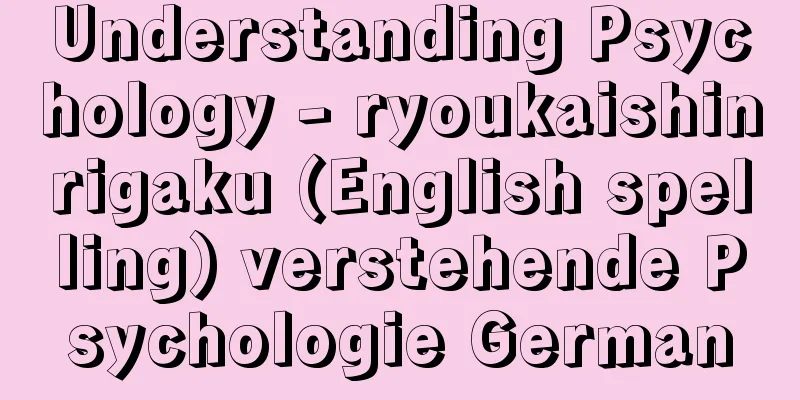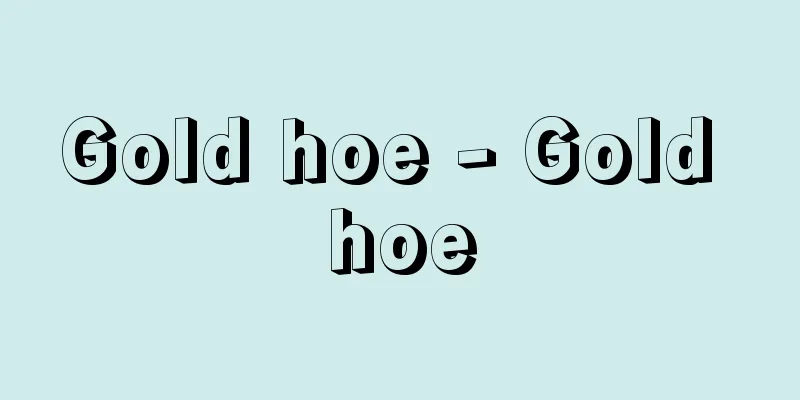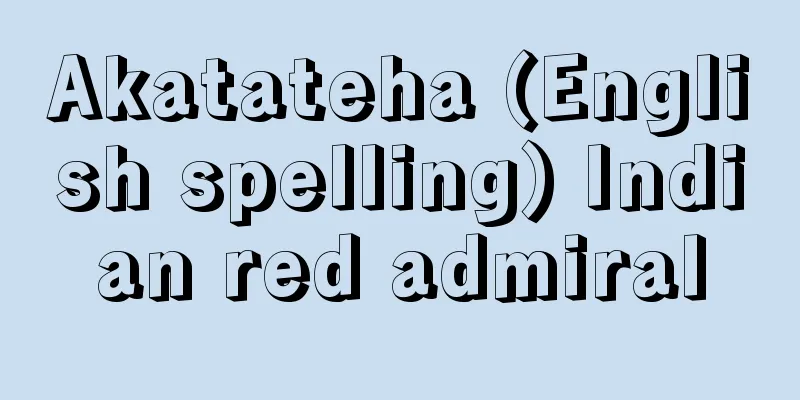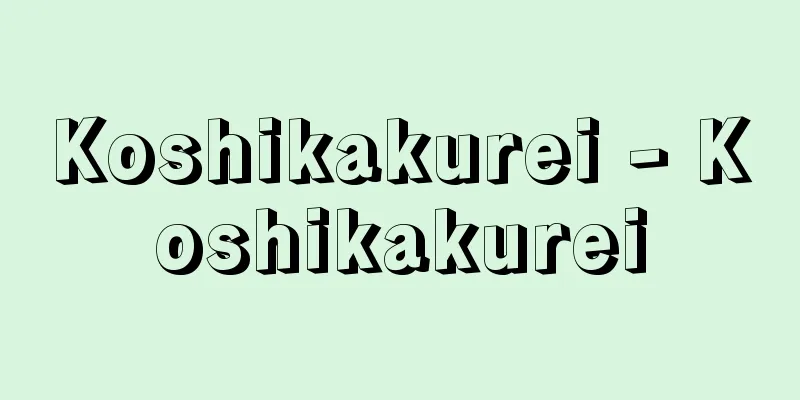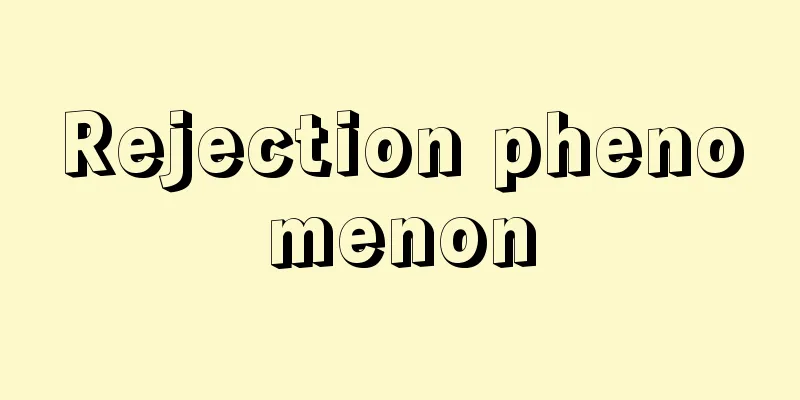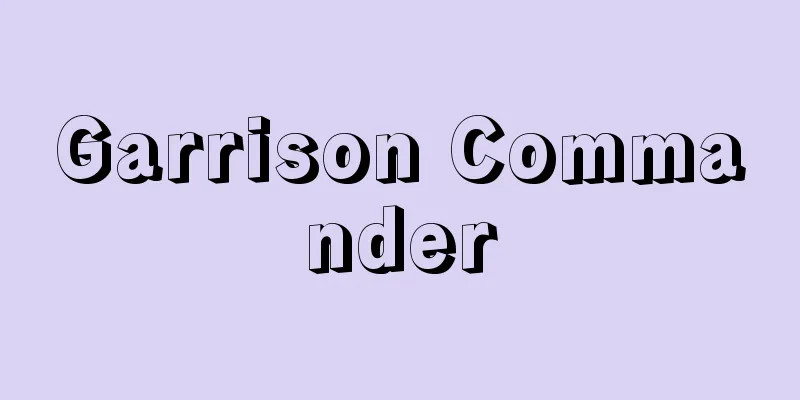Press Club - Press Club
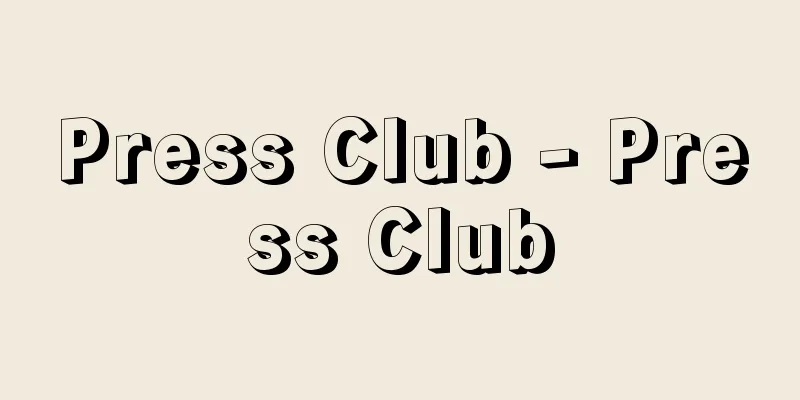
|
Clubs are set up by journalists who frequent the institutions they cover, such as parliaments, government ministries, police, and large corporations. The club room, or press room, is provided by the institution. Many of the journalists stay in the club room and use it every day to cover the institution in question. Clubs establish the practice of holding regular press conferences, and depending on the information, may also agree on embargo dates. Club reporters who are fortunate enough to have such conditions have a significant advantage in terms of reporting compared to journalists who are not members of a club. [Keiichi Katsura] HistoryThis unique Japanese press club system began in 1890 (Meiji 23) when the Imperial Diet was opened and the "Parliamentary Press Corps" (later called the "Allied Press Clubs") were formed. These journalists, who would not have been taken seriously by the authorities if they were separated, banded together beyond the boundaries of their companies and opinions, gained institutional freedom of reporting, and built the foundations of the early clubs. Many of them had been active as free thinkers, living by their pens, until before the Second World War. They even rejected the constraints of their companies, using the pledges of their clubs as a shield. However, after the establishment of the Japan Newspaper Association, a control group, and the forced unification of newspapers (one prefecture, one newspaper policy) in 1942 (Showa 17) after the outbreak of the Pacific War, a de facto press registration system was implemented, which meant that only staff journalists of newspaper companies and the Japan Broadcasting Corporation, which were members of the Japan Newspaper Association, could belong to government agency clubs, and the nature of the clubs changed completely. [Keiichi Katsura] Press Clubs after World War IIIn 1945, GHQ (General Headquarters of the Supreme Commander for the Allied Powers), which planned to democratize Japan after the war, asked the newspaper industry to reform the press club system. However, member companies of the Japan Newspaper Publishers & Editors Association (reorganized from the Japan Newspaper Association) and Japanese government agencies, who were accustomed to the club system of World War II, unanimously resisted this. The rationale is stated in the Newspaper Publishers & Editors Association's Policy on Press Clubs (1949). Their argument was that press clubs were "social organizations" for the field, not work organizations, and thus they were able to downplay the need for reform and avoid GHQ's requests. However, in reality, the clubs continued to function as powerful news reporting organizations, and after independence (the disappearance of GHQ's power) and the rapid growth of the Japanese economy, the collusion between the power of the Japanese government and the major media, which had increased their monopoly, became too much, and the club system began to be criticized by foreign news organizations and freelance reporters for weekly magazines, etc. The biggest problem is that all kisha clubs in Japan have maintained a closed membership system that remains almost unchanged since World War II, in which only employee journalists from member companies of the Japan Newspaper Publishers & Editors Association (including NHK) and the Japan Commercial Broadcasters Association (JBA) are eligible to become members. [Keiichi Katsura] Club reform trends and challengesIn 1992, in response to strong requests from foreign journalists, the Kasumi Club (Ministry of Foreign Affairs Press Club) allowed them to join as observers, and since then, kisha clubs have been subject to waves of change, including the shift in the Japan Newspaper Publishers & Editors Association's policy to open their clubs to the public (1993), a citizen lawsuit against Kyoto City's spending of public funds on journalists' rooms (1994), and the end of Kamakura City's provision of journalists' rooms (1996), all the way up to Nagano Governor Tanaka Yasuo's declaration to "move away from kisha clubs" (2001). In 1997, the Japan Newspaper Publishers & Editors Association announced its view that clubs should no longer be "social institutions," but should be considered "reporting bases," and in 2002, it further announced new views that separated "clubs = independent organizations of journalists" from "journalists' rooms = public facilities," that the standards for club membership should not be limited to employees of member companies of the Japan Newspaper Publishers & Editors Association and the Japan Commercial Broadcasters Association, but should be decided independently by each club, and that efforts should be made to make journalists' rooms available to all journalists, leaving the solution to be decided by the field. However, the club reporters' voluntary efforts to open their press rooms and press conferences were not very successful. Following the general election in August 2009, which saw a change of government from the Liberal Democratic Party to the Democratic Party of Japan, the new government promised to open up press conferences. The main reason for those calling for the opening of press clubs was fairness in the opportunity to report on news, and the Prime Minister's Office, the Ministry of Foreign Affairs, and the Financial Services Agency took the lead in allowing freelance journalists to participate in ministerial press conferences, which created momentum for a major change in the issue of press clubs. Furthermore, in January 2011, when Minister for Internal Affairs and Communications Katayama held a press conference, a freelance journalist brought video equipment to the press club without permission and broadcast the event live on the Internet. It is also important to note that the spread and use of the Internet is greatly undermining the press club's monopoly on news sources. As these changes go forward, new forms of press clubs and the professional association of journalists will likely emerge. [Keiichi Katsura] Newspaper Coverage Research Group (ed.), Newspaper Coverage, Volumes 1 and 2 (1968, Japan Newspaper Publishers & Editors Association) ▽ Tokyo Bar Association (ed.), The Rights of Those Being Interviewed (1990, Nippon Hyoronsha) ▽ Nishiyama Takenori (ed.), The Leak: The Hidden Face of Newspaper Coverage (1992, Kodansha) ▽ Hara Hisao (ed.), Journalism is Changing: Prospects for a Citizen Revolution in Newspapers and Television (1994, Banseisha) ▽ Newspaper Workers' Union (ed.), Thinking about Newspaper Journalists (1994, Banseisha) ▽ Newspaper Workers' Union (ed.), Newspaper Research Department (ed.), Proposals for Press Club Reform (1994, Japan Newspaper Workers' Union Confederation) ▽ Newspaper Coverage Research Group (ed.), Thinking about Newspapers Today (1995, Japan Newspaper Publishers & Editors Association Research Institute) ▽ Contemporary Journalism Research Group (ed.), Press Clubs: Aiming for Press Clubs that Walk Together with the Citizen! (1996, Kashiwa Shobo) Shibayama Tetsuya, The Collapse of the Japanese Media System: The Evolution of Journalism in the 21st Century (1997, Kashiwa Shobo) The Japan Newspaper Publishers & Editors Association, Interviewing and Reporting 2002 (2002) Hanada Tatsuro and Hiroi Osamu, Debate: Journalist Education Today (2003, University of Tokyo Press) Press Clubs: The Information Cartel, by Laurie Ann Freeman, translated by Hashiba Yoshiyuki, The Possibilities of Journalism, by Iwase Tatsuya (Kodansha Bunko) The Collapse of the Press Club: The 200-Day War with Newspapers and Television, by Hara Hisao (Iwanami Shinsho) The Collapse of the Press Club: The 200-Day War with Newspapers and Television, by Uesugi Takashi (Shogakukan 101 Shinsho) [References] | | |Source: Shogakukan Encyclopedia Nipponica About Encyclopedia Nipponica Information | Legend |
|
議会、省庁・警察、大企業などの取材対象機関のなかに出入りの記者たちが設けたクラブ。クラブ室=記者室は相手機関が提供する。記者たちの多くはクラブ室に常駐して毎日これを利用、当該機関の取材にあたる。クラブは定例的な記者会見の慣行を確立し、情報によっては報道解禁日の協定なども行う。このような条件に恵まれたクラブ記者は取材上、クラブ非加盟の記者と比べて格段に有利である。 [桂 敬一] 沿革こうした日本独自の記者クラブ制度は1890年(明治23)、帝国議会開設を機に「議会出入り記者団」(後に「同盟記者倶楽部(クラブ)」と名のる)が結成されたことに始まる。ばらばらでは権力に相手にしてもらえなかった記者たちが社や意見の立場を超えて団結し、制度的な取材の自由を獲得、創成期のクラブの基礎を築いたのである。彼らの多くは第二次世界大戦前まで、筆一本で生きる自由な言論人として活動してきた。所属クラブの盟約を盾にとり、社の束縛を排除さえした。ところが、統制団体・日本新聞会が設立され、太平洋戦争勃発(ぼっぱつ)後の1942年(昭和17)、新聞統合(一県一紙政策)が強行されると、同会会員である新聞社・日本放送協会の社員記者だけが政府機関のクラブに所属できるとする、事実上の記者登録制度が実施され、クラブの性格は一変した。 [桂 敬一] 第二次世界大戦後の記者クラブ1945年、敗戦日本の民主化を企図したGHQ(連合国最高司令官総司令部)は記者クラブ制度の改革を新聞界に求めた。しかし、日本新聞協会(日本新聞会が改組)の加盟社と第二次世界大戦時のクラブ制度に慣れた日本の政府機関は、一致してこれに抵抗した。その理論的根拠は「記者クラブに関する新聞協会の方針」(1949)に述べられている。記者クラブは現場の「親睦(しんぼく)機関」であって仕事の組織ではない、とするのがその言い分であり、それによって改革の必要の度合いを薄め、GHQの要請をかわしてきた。だが、現実には強力な取材組織としてクラブは機能し続け、独立=GHQ権力の消失、日本経済の高度成長を経て、日本の政府権力と独占度を高めた大メディアの癒着が目に余るようになるのに伴い、外国報道機関や、週刊誌などのフリーの記者たちから、クラブ制度に批判が寄せられるようになっていった。最大の問題点は、日本中どこの記者クラブも、新聞協会会員社(NHKを含む)、民放連(日本民間放送連盟)会員社の社員記者だけしかメンバーになれないという、第二次世界大戦中とほとんど変わらない閉鎖的な会員制度が維持されてきたことである。 [桂 敬一] クラブ改革の動きと課題1992年(平成4)、外国人記者の強い要請を受け入れ、霞(かすみ)クラブ(外務省記者クラブ)が彼らのオブザーバー加盟を認めて以後、新聞協会のクラブ開放方針への転換(1993)、京都市の記者室への公金支出に対する市民提訴(1994)、鎌倉市の記者室提供打切り(1996)などを経て、長野県知事田中康夫の「脱・記者クラブ」宣言(2001)に至るまで、記者クラブは変化の波に洗われ続けてきた。新聞協会は1997年、クラブを「親睦機関」から一転「取材拠点」とみなす見解を打ち出し、2002年にはさらに、「クラブ=記者の自主組織」と「記者室=公的施設」とを分離、クラブの会員資格基準は新聞協会・民放連加盟社社員に限ってはならず、各クラブが自主的に決めるべきであり、記者室はすべての取材者が利用できるように図るべきだ、とする新見解を発表し、解決を現場に委ねた。だが、クラブ記者たちの自発的な記者室・記者会見開放の動きは、はかばかしくなかった。 2009年8月の総選挙で、自民党から民主党に政権交代がなされると、新政権は記者会見の開放を約束した。クラブ開放を求める人たちの最大の理由は、取材機会の公平さであり、首相官邸、外務省、金融庁が率先してフリージャーナリストの大臣会見参加を受け入れたことで、記者クラブ問題が大きく変化する機運が生じた。 さらに2011年1月、片山総務相会見の際、フリー記者が記者クラブに断らず動画機材をもち込み、インターネット上での生中継を敢行するなど、インターネットの普及と利用の拡大が、記者クラブの取材源独占を大きく揺るがしている点も見逃せない。これら変化の行く手に、新しい記者クラブの姿や、ジャーナリストの職能集団としての姿も浮かび上がるであろう。 [桂 敬一] 『新聞取材研究会編『新聞の取材』上下(1968・日本新聞協会)』▽『東京弁護士会編『取材される側の権利』(1990・日本評論社)』▽『西山武典著『「ザ・リーク」新聞報道のウラオモテ』(1992・講談社)』▽『原寿雄著『ジャーナリズムは変わる――新聞・テレビ 市民革命の展望』(1994・晩聲社)』▽『新聞労連編『新聞記者を考える』(1994・晩聲社)』▽『新聞労連新聞研究部編『提言 記者クラブ改革』(1994・日本新聞労働組合連合)』▽『新聞報道研究会編著『いま新聞を考える』(1995・日本新聞協会研究所)』▽『現代ジャーナリズム研究会編『記者クラブ――市民とともに歩む記者クラブを目指して!』(1996・柏書房)』▽『柴山哲也著『日本型メディア・システムの崩壊――21世紀ジャーナリズムの進化論』(1997・柏書房)』▽『日本新聞協会編・刊『取材と報道 2002』(2002)』▽『花田達朗・廣井脩編『論争 いま、ジャーナリスト教育』(2003・東京大学出版会)』▽『ローリー・アン・フリーマン著、橋場義之訳『記者クラブ――情報カルテル』(2011・緑風出版)』▽『岩瀬達哉著『新聞が面白くない理由』(講談社文庫)』▽『原寿雄著『ジャーナリズムの可能性』(岩波新書)』▽『上杉隆著『記者クラブ崩壊――新聞・テレビとの200日戦争』(小学館101新書)』 [参照項目] | | |出典 小学館 日本大百科全書(ニッポニカ)日本大百科全書(ニッポニカ)について 情報 | 凡例 |
>>: Heat of dilution - Kishakunets
Recommend
Lehman, C.
…It was at this time that Holy Roman Emperor Rudo...
Anchises (English spelling)
In Greek and Roman legend, he was a Trojan hero i...
Ookaburaya Shrine
...Before World War II, it was known as a place f...
Genroku Chushingura
A historical drama series by Mayama Seika, consis...
Schickard, W.
...This machine was used to perform multiplicatio...
Acoustic epilepsy - Acoustic epilepsy
...This condition may last from several hours to ...
Suhrawardy Order - Suhrawardy Order
An Islamic mystical order (tariqa) founded by Su...
Unkoku Touya - Unkoku Touya
1582?-1615 A painter from the early Edo period. B...
Domangeon - Domanjon (English spelling)Albert Demangeon
French geographer. His doctoral thesis in 1905, a...
Timbira
...In pre-Hispanic times, this ball game was also...
Treaty of Cateau-Cambrésis
…Fights between France and the Habsburgs were als...
Eigenji Temple (Yamanashi)
...The Yamanashi National Medical University is l...
Main house - Hontaku
〘 noun 〙 A house where one lives on a daily basis,...
Hunminjeongeum - Kunminseion
During the reign of King Sejong of the Joseon Dyna...
Champanagara (English spelling) Champanagara
…Located on the south bank of the Ganges River. C...
